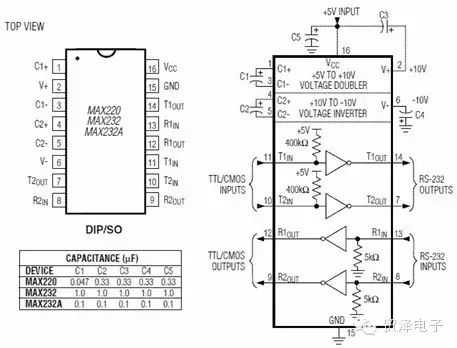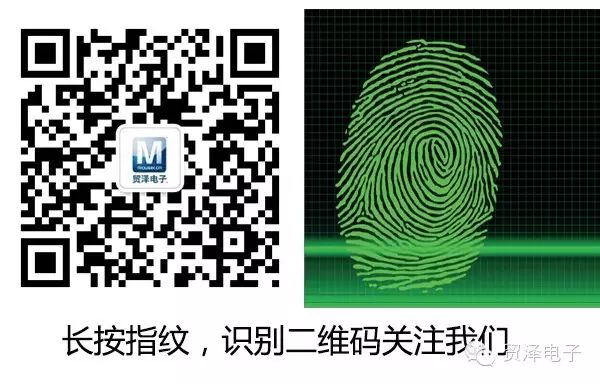Author Jeff Dorsch
RS-232-C is a serial physical interface standard established by the Electronic Industry Association (EIA) in the United States in the 1960s. RS stands for “Recommended Standard,” 232 is the identifier number, and C indicates the number of revisions. Why is RS-232 so widely used? Why not the Universal Serial Bus (USB) or other, more modern data communication standards? Ask a dozen engineers, and you might get a dozen different answers.
The only possibly unanimous answer is that RS-232 is familiar to many electronic engineers. This standard dates back over fifty years and is also known as EIA RS-232, EIA 232, and TIA 232 (standards from the Electronic Industry Alliance and the Telecommunications Industry Association, respectively).
If you search for RS-232 products on the Mouser Electronics website, you will find 5,750 results covering areas like circuit protection, connectors, electromechanical, embedded solutions, optoelectronics, passive components, power supplies, semiconductors, sensors, testing and measurement, thermal management, tools, everyday items, wire and cable, and more.
Moreover, now there are not only the ancient (from the perspective of the electronics industry) and historically significant RS-232 specification. There are also RS-422, RS-423, RS-485 (16 years), I2C (32 years), Serial Peripheral Interface (SPI), and more.
In contrast, USB is a relatively young communication standard. In 1994, seven companies began developing USB. (Among them, three companies—Compaq, Digital Equipment, and Nortel—are no longer in existence, yet their technologies are still in use throughout the industry.) The USB 1.0 specification was first released in January 1996, and the subsequent USB 1.1 version was widely adopted. USB 2.0 and USB 3.0 versions were released in 2000 and 2008, respectively.
1History of Serial Interface Standards
RS-232 (“RS” stands for “Recommended Standard”) was introduced in 1962 by the radio department of EIA as a standard for serial communication data between data terminal equipment (such as computer terminals) and data communication equipment (later redefined as data circuit-terminating equipment), typically modems. The RS-232 serial port was first used in IBM personal computers and other early desktop computers. The standard was revised in 1969, then again in 1986, and 1997, to adapt to changes in applications, initially in the electromechanical teletypes and modems of the 1960s, evolving through personal computers and their peripherals in the 1980s, and later used in programmable logic controllers (PLCs) and other products in factories.

Figure 1: ADI fully isolated single-chip package surface mount RS-232 transceiver, integrated with DC/DC converter (Source: ADI).
RS-422 was developed to extend the range of RS-232 connections to 1,500 meters (approximately 4,900 feet). The similar RS-423 standard can cover up to 1,200 meters (approximately 3,900 feet). RS-422 was used in Apple’s Macintosh computers until 1998, when USB connections began to be utilized with the iMac.
RS-485 can cover up to 1,220 meters (approximately 4,000 feet) and is used in automation systems (including PLCs), building automation, computer equipment, and lighting systems for railways and theaters.
2Why Are Design Engineers Still Using RS-232?
With technological advancements, why do some engineers still choose RS-232 over USB? One reason is cost considerations. If a company is not a member of USB-IF (the industry organization for USB, which charges a logo licensing fee of $3,500 every two years) and purchases a vendor’s logo from USB-IF, it costs $5,000. Implementing RS-232 does not require any licensing fees or organizational dues.
Of course, application and speed are also key factors in choosing RS-232.
“Despite the development of new digital interface standards, the unassuming RS-232 serial port remains a very popular method of data transmission. Powerful yet easy to use, for those demanding digital interfaces, RS-232 still serves as an attractive fallback,” noted Maxim on its website.

Figure 2: Pin configuration and typical operating circuit for MAX220, MAX232, and MAX232A (Source: Maxim Integrated).
The RS-232 specification can support data rates of up to 920 kbps. An RS-232 connection is a point-to-point link between Data Terminal Equipment (DTE) and Data Communication Equipment (DCE). One major drawback of RS-232 is its maximum cable length of 50 feet, but this limitation can often be mitigated by using alternative media for transmitting serial data.
RS-422 can achieve rates of up to 10 Mbps, providing an incredible fast serial data rate in multi-station configurations, allowing for up to 10 loads. It uses voltage differences to make it suitable for noisy environments. The RS-485 specification also allows data rates of up to 10 Mbps, but it differs from RS-422 in that it provides a multi-point configuration, allowing for multiple drivers and multiple receivers. Additionally, due to its bidirectional nature, RS-485 can support up to 32 loads.
Currently, RS-232 is used in embedded electronics, industrial control systems, networking devices, and scientific instruments. While USB interfaces dominate personal computers and mobile devices, serial ports—once very popular in early PCs—are still in use in modern electronics. Today, the entire Internet of Things (IoT) ecosystem demands that technology not only meets low power requirements but also has to be simple to design and implement. Even if not in the billions, there are millions of sensors and sensor hubs that will connect to the Internet, and these connections must be consistent and reliable.
RS-232 technology has been popular in the Arduino community, including a group of designers, enthusiasts, hobbyists, and others utilizing the Arduino programming language, development environment, and open-source code. Pre-installed Arduino boards can be downloaded from Mouser.com. Arduino provides free hardware reference design tools that can be downloaded for those who want to assemble their own single board, along with a tutorial on using the MAX3323 for level shifting with a single-channel RS-232 driver/receiver chip (or similar semiconductor device) and the software for serially connecting to Arduino circuit boards. This tutorial offers step-by-step guidance, including how to prepare the breadboard and write a simple program to achieve serial data communication.
Arduino forums host multiple discussions related to RS-232, such as controlling laboratory equipment with RS-232, connecting GPS sensors, communicating with medical devices, interfacing with GSM TC35 modems, and controlling a television.
A forum survey titled “RS232 Connecting Arduino” held in May attracted a series of responses from other engineers working on open-source Arduino technology. To connect most modern PCs with Arduino boards, an RS-232 to USB adapter cable is essential, and not all of these adapters utilize RS-232. Forum posts noted that the cable drivers do not work on Windows 7 or Windows 8 (especially Windows 8), necessitating careful consideration of how to connect Arduino boards to most PCs produced in recent years, which only have USB ports and no RS-232 ports.
RS-422 and RS-485 standards have some advantages over RS-232 in terms of signal transmission distance and data transfer speed, while I2C and SPI specifications provide even more advantages and features. I2C was originally developed by Philips Semiconductor chips (now known as NXP Semiconductors) as an internal integrated circuit protocol. It was spun off from Philips in 2006, and other semiconductor manufacturers adopted the protocol in the 1990s, including Intersil, Motorola Semiconductor Products (now Freescale Semiconductor), NEC, Siemens Semiconductor (now Infineon Technologies), SGS-Thomson (now STMicroelectronics), and Texas Instruments. Intel defined the System Management Bus (also known as SMBus or SMB) in 1995 as a subset of the I2C serial bus protocol. SMBus has a variant known as the Power Management Bus or PMBus variant. SPI is built on the previous serial interface set, offering higher throughput than I2C or SMBus, but it also has some drawbacks, such as requiring more pins for IC packaging compared to I2C.
3Communication Interfaces—Past, Present, and Future
Of course, many other types of communication interfaces have emerged over the years (some of which have come and gone quickly, such as FireWire—a serial bus interface developed by Apple). In addition to USB, there are Ethernet, Fibre Channel, InfiniBand, Musical Instrument Digital Interface (MIDI), Peripheral Component Interconnect (PCI) and PCI Express, Small Computer System Interface (SCSI) (alongside parallel SCSI and Serial Attached SCSI), and ATA (alongside parallel ATA and Serial ATA), and more.
USB, especially USB 3.0, is significantly faster than RS-232, but also more complex. RS-232 only demonstrates its advantages in short-distance transmission. USB operates at 5 V, while RS-232 can operate at a maximum of 15 V. For design engineers, the simplicity of RS-232 is a selling point, as it can handle a variety of intricate demands from electronic subsystems. Making data transmission as straightforward as possible through serial communication—this is a nostalgic technology for computers, mobile phones, and wearable devices.
So, although new industry standards have emerged, factors such as cost, speed, and applications have led to antique standards like the RS-232 serial interface standard, RS-422, and RS-485 remaining engineers’ favorite communication technologies for many years.
